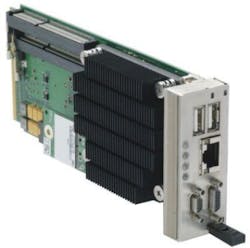DURHAM, N.C., 18 Feb. 2011. Nextreme Thermal Solutions in Durham, N.C., is introducing Thermobility power-generation technology that uses heat as a source of electricity for low-power wireless applications by using solid-state thin-film thermoelectric technology to convert heat into electricity.Thermobility uses differences in temperature to enable wireless power anywhere with an adequate heat source. It eliminates the need to use traditional wired power sources or replaceable batteries. When paired with wireless transmitters, Thermobility can provide electric power for decades of maintenance-free operation for applications in industrial control, transportation, automotive. and building management.Thermobility WPG-1 provides a constant voltage output of 3.3, 4.1, or 5.0 volts DC to electrical loads of 15 kilo-ohms or higher. The WPG-1 is about the size of a golf ball and consists of a pin-fin heat sink, a custom circuit board, Nextreme's eTEG HV56 thermoelectric power generator module and a metal attachment plate that is applied to the desired heat source.The device incorporates a Linear Technologies LTC3108 ultralow voltage step-up converter and power manager chip to provide up to 1 milliwatt of electrical power at temperature differentials as low as 15-20K relative to ambient. Larger temperature differences can generate significantly more power.
The WPG-1 is designed for ease of use with any flat-surface heat source. For simple bench-top testing, the WPG-1 can be placed directly on a laboratory grade hotplate with temperature control. For evaluation with other surfaces, the attachment plate can be mated with either thermal grease for normal horizontal application or double-stick thermal pad for vertical mounting.
The integrated circuit board includes DIP switches for setting the output voltage. Electrical connections can be made using the on-board 2-pin or 6-pin connectors. The 6-pin connector is a Texas Instruments proprietary connector that mates to the eZ430 wireless target board, making the WPG-1 an ideal wireless power source for the eZ430 development platform.
For more information contact Nextreme online at www.nextreme.com.
